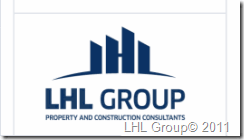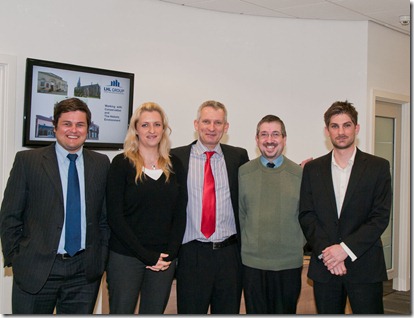It was off to the Chocolate Works in York last Wednesday. LHL director and building surveyor Matthew Ward invited me along to talk to the surveying team about damp diagnosis. This is part of LHL’s commitment to continuing professional development, designed to keep the surveying team on a constant learning curve.
LHL Group’s York office is in a state of the art building, within the old Terry’s plant, which is being redeveloped. Seven unfortunate souls were present for the 1 hour scheduled presentation. I took along most of my surveying kit, including chemical moisture meter, electrical moisture meters and bits and bobs, like salt analysis kits, humidity data logging plots, infrared thermometers, psychrometric charts and of course over 100 slides of images from real properties, demonstrating on-site practical use of equipment and a range of damp scenarios to talk through.
Talking to professional surveyors is great because whilst they have enormous knowledge anyway, they quickly ‘cherry pick’ anything they can, which may be useful for them in their daily work. That’s good for me because when I see them suddenly start writing notes or asking deeper questions, I know that the information I’m passing on will be put to good use; for them and their clients. It’s also a nice indicator, that they’re paying attention…
Whilst we’re coming towards the end of this year’s ‘condensation season’, we spent some time looking closely into condensation monitoring and control and I was able to use psychrometrics to dig into the relationships between temperature effects on relative humidity and on dew points.
A Protimeter MMS was used in condensator mode and the operating method demonstrated using slides of readings from an actual site in York, with transient condensation problems. Graphs of data plots from properties in damp condition (Wet Occupancy; BS5250), were studied and compared during a drying period, after condensation controls were put in place.
The types of mould colony growths expected in given circumstances were shown and I was able to bring the surveyors up to date with the latest trends in mould remediation. Obtaining ‘moisture profiles’ as a damp diagnosis aid was covered and demonstrated too.
The discussion also touched on the effects of new PART L regulations as applied to new and existing buildings and things to look out for when dealing with PART L in refurbishment situations. The importance of communicating well with tenants and homeowners afflicted with damp issues was stressed and I was able to talk through some strategies, which I’ve found useful when getting my message across to them.
Talk eventually turned to structural repairs, wall tie corrosion problems, defects in new buildings and plastic stone repairs, before we ran out of time and all of us left the Chocolate Works – to carry out more surveys.
My thanks got to Matthew for inviting me to talk to his team at LHL Group – I hope it met his expectations.
Dry Rot

